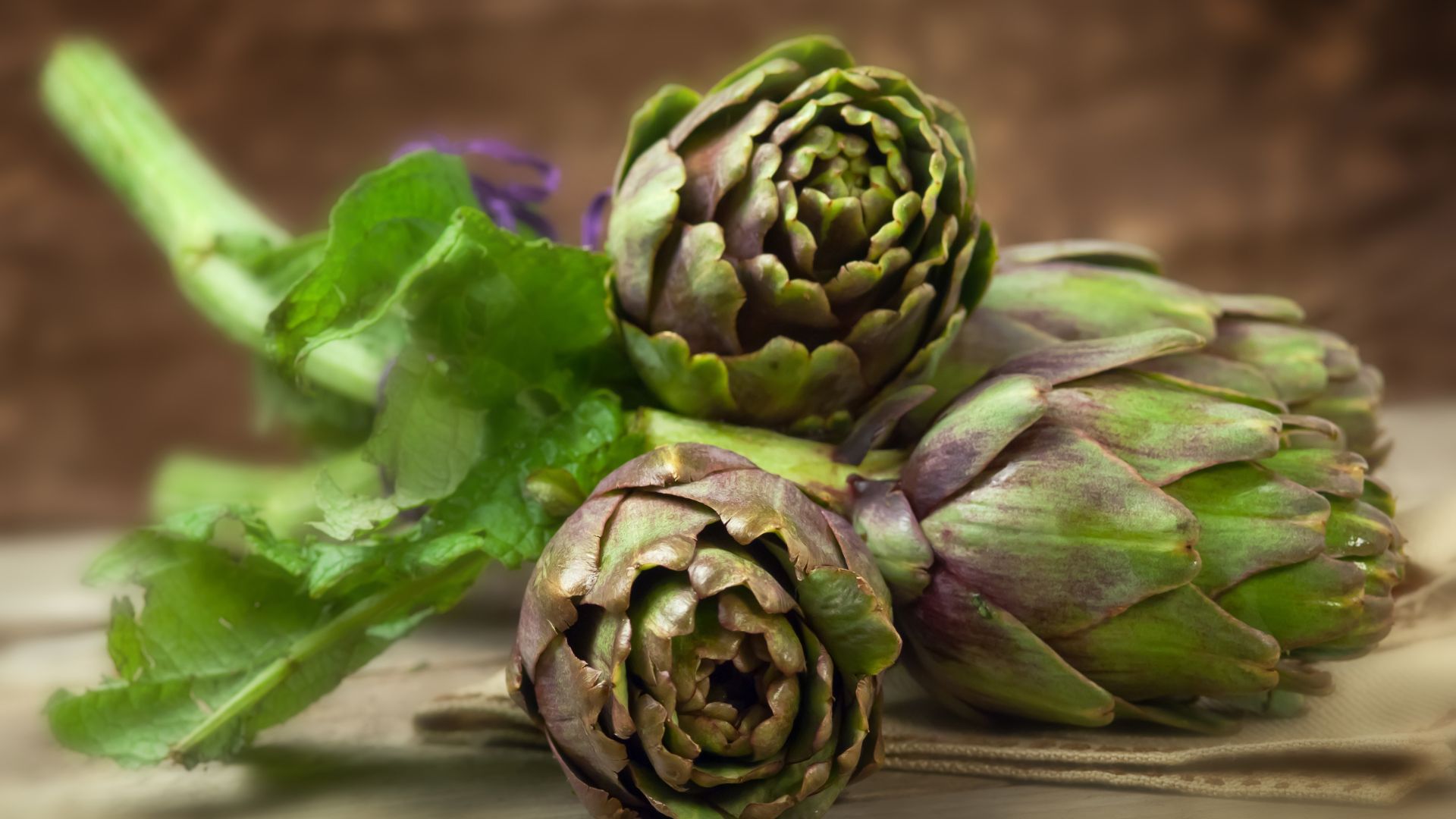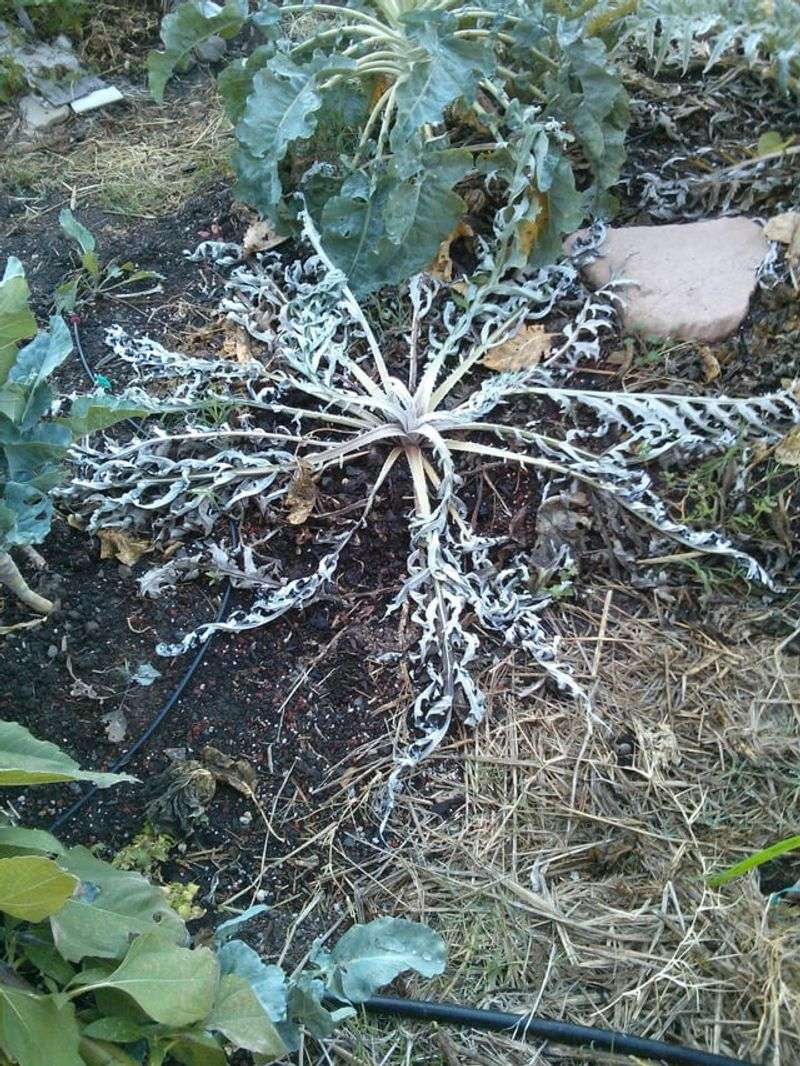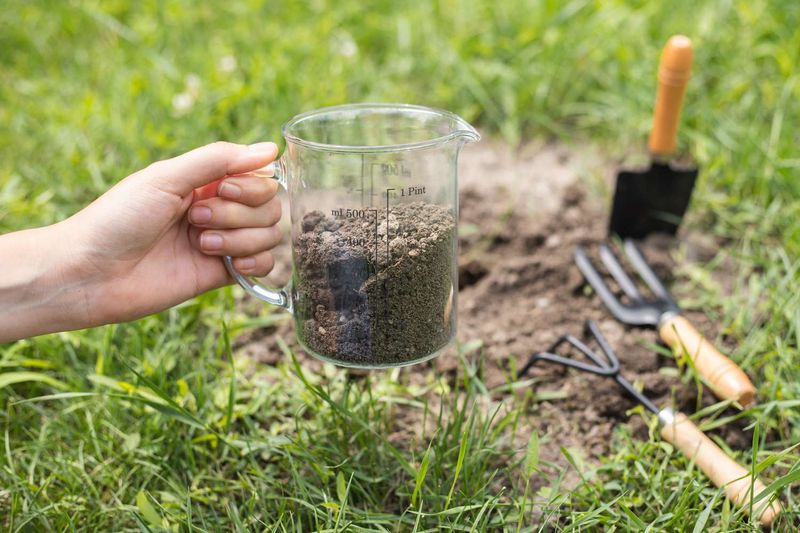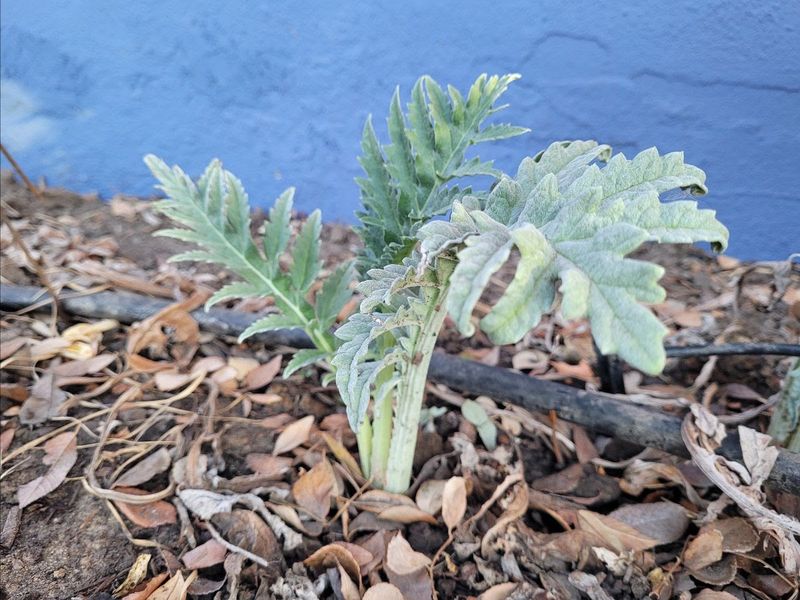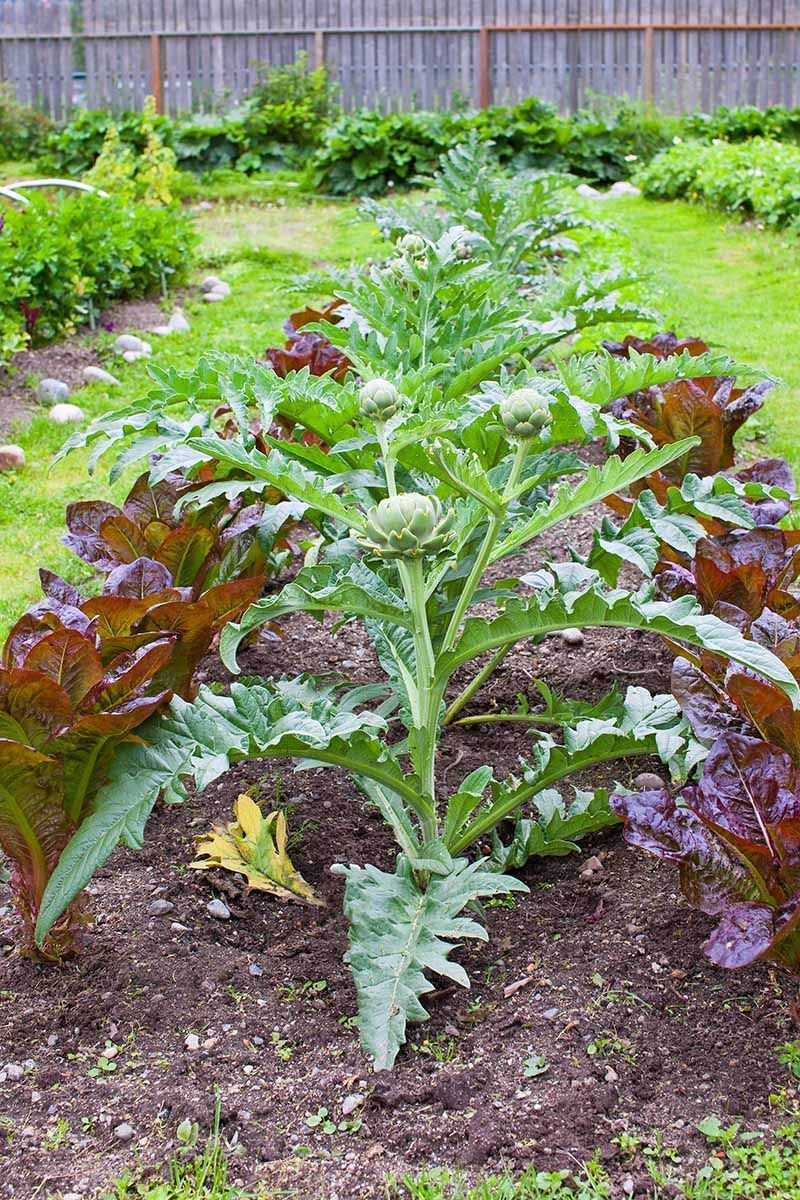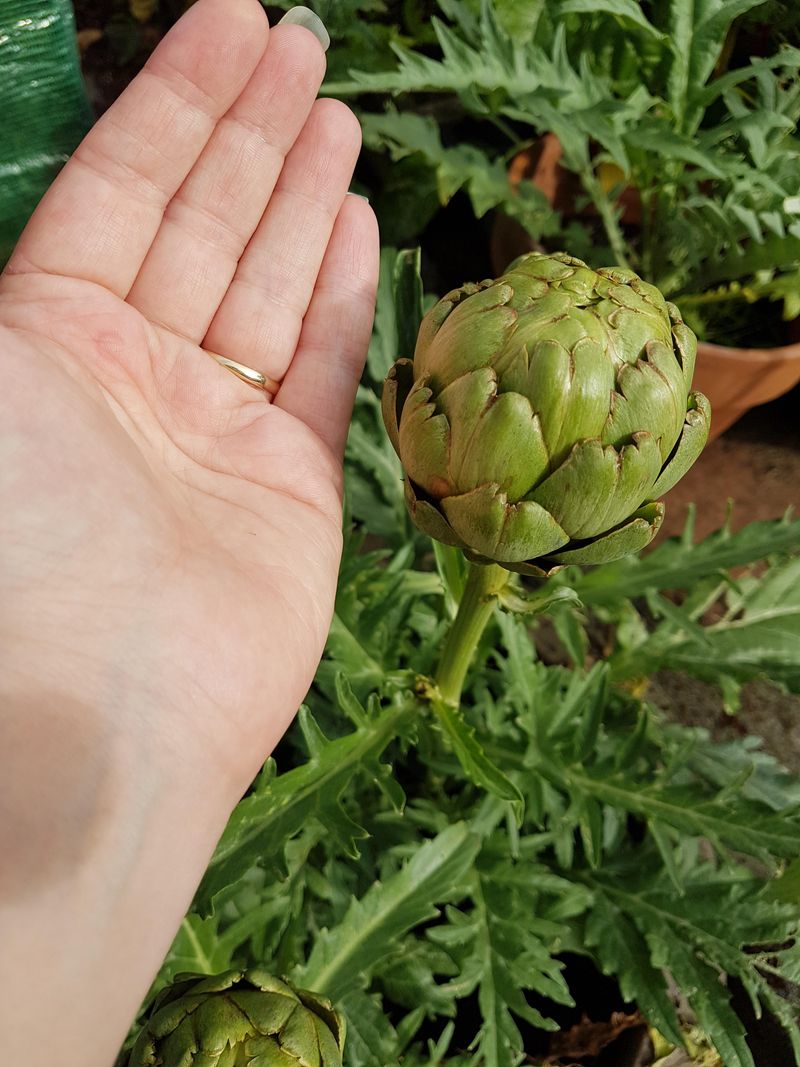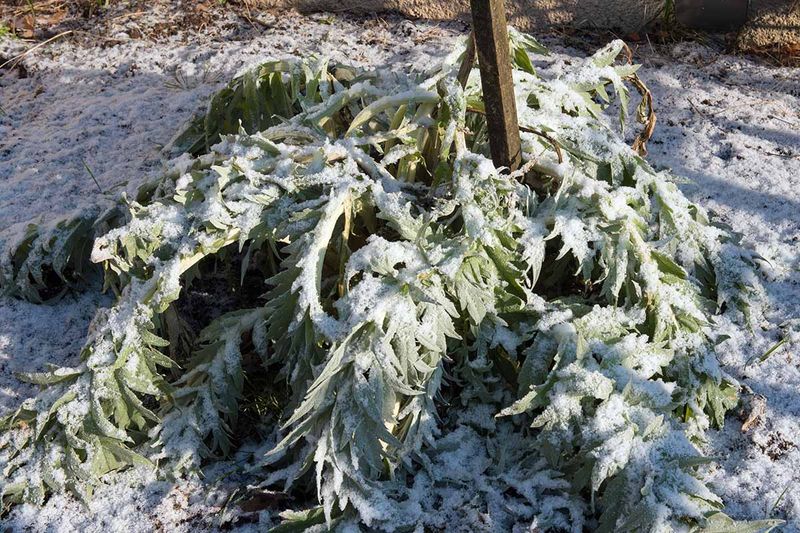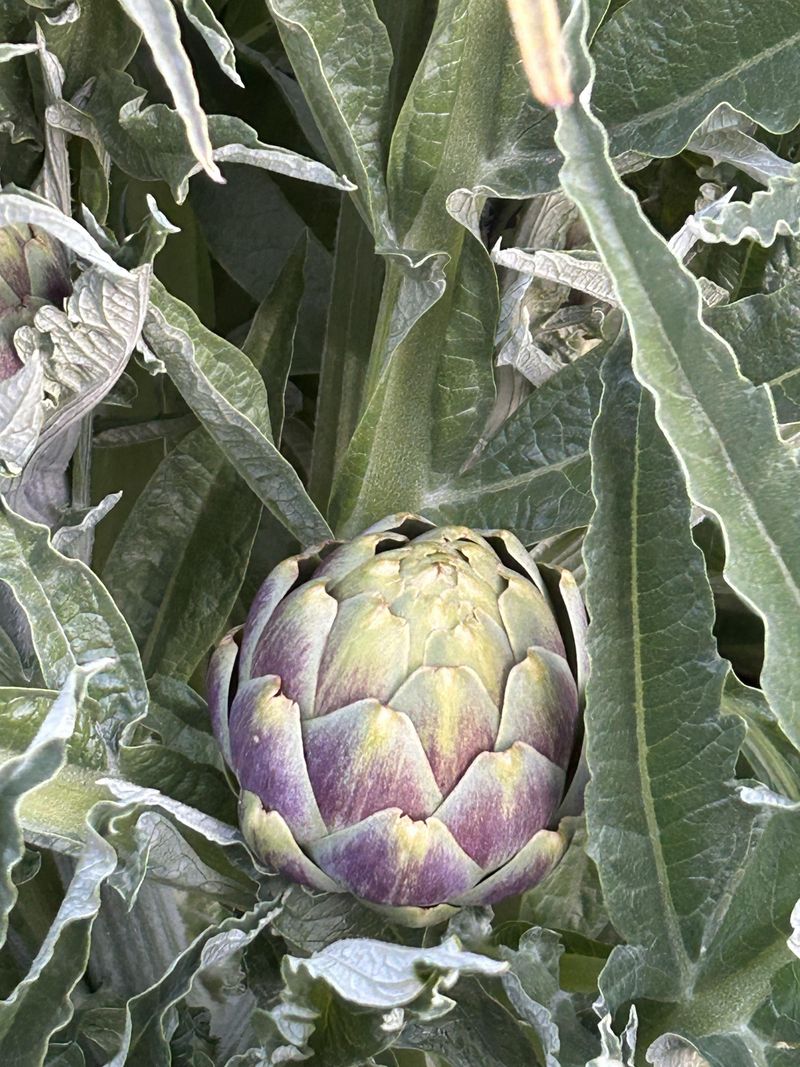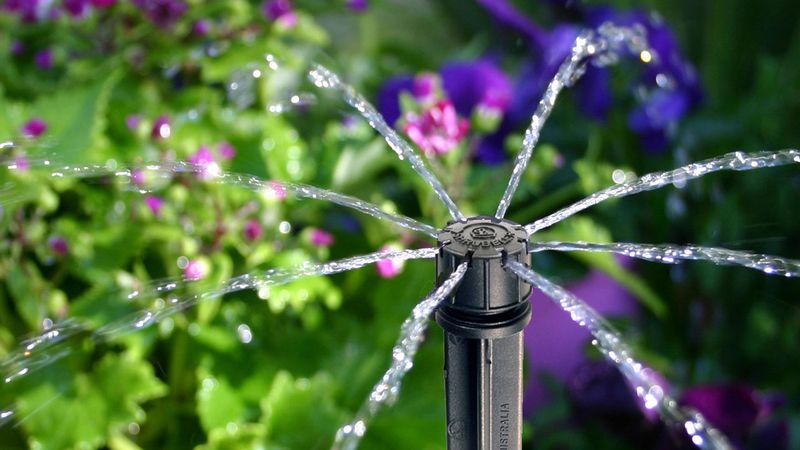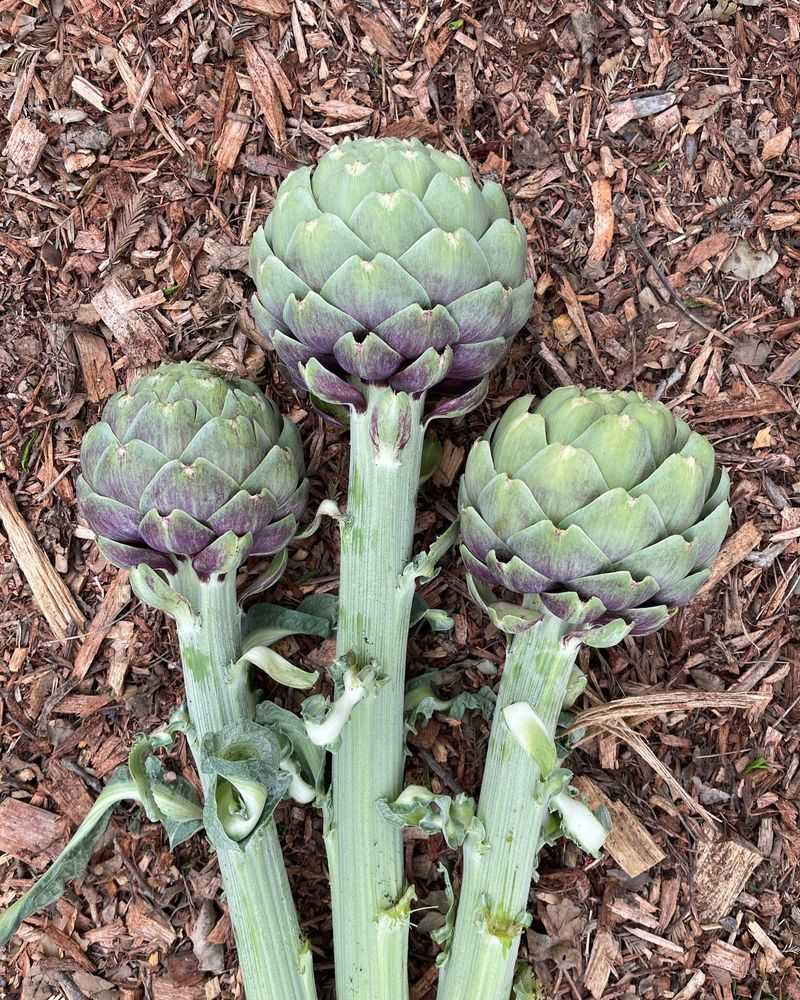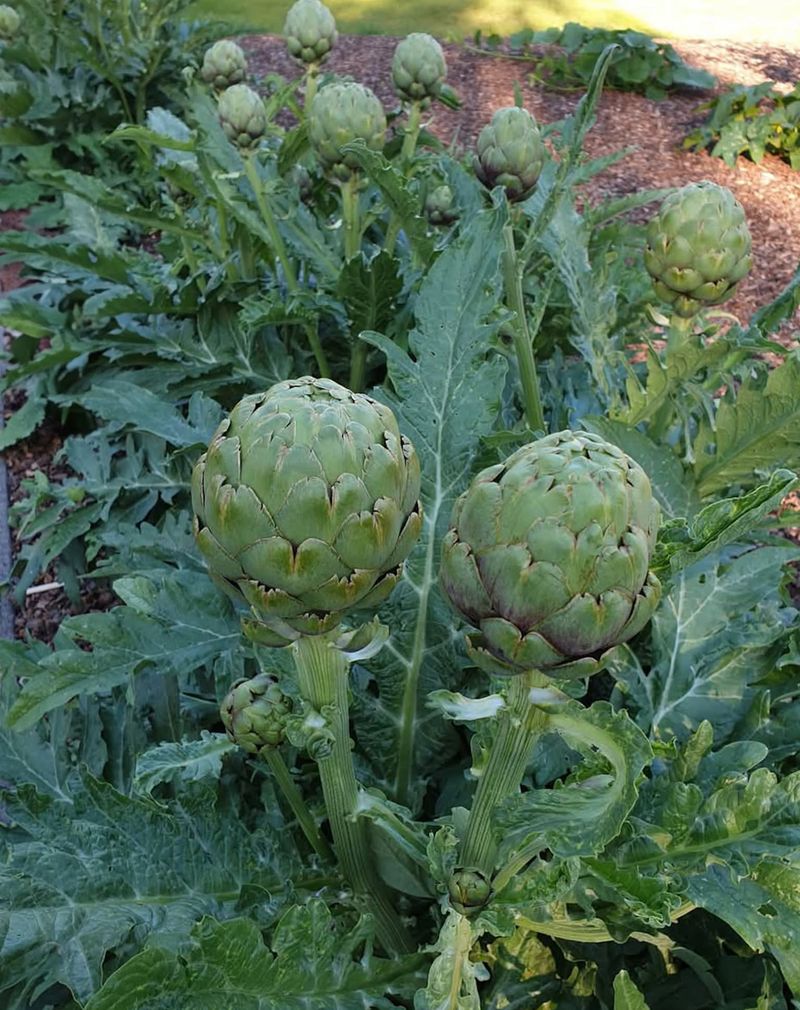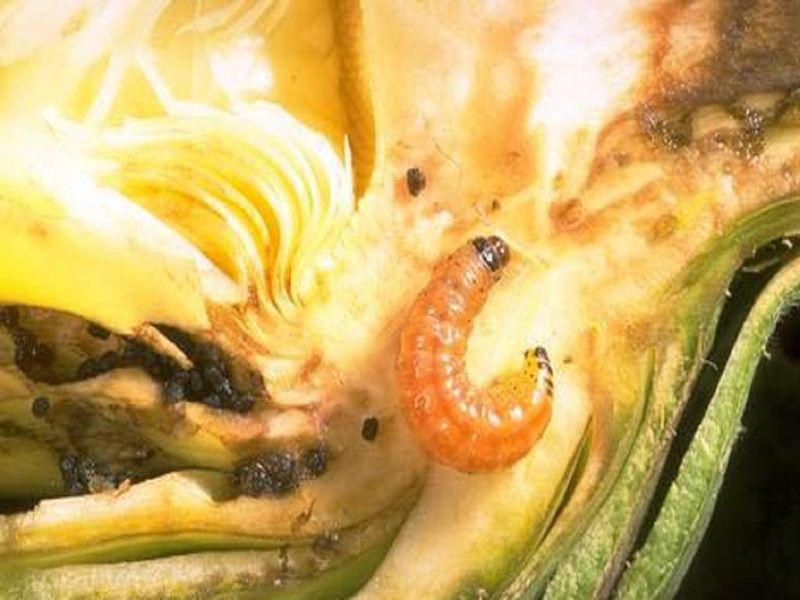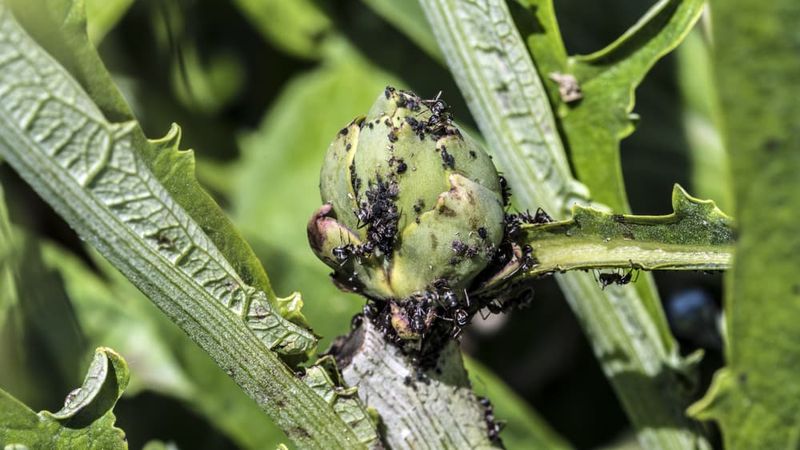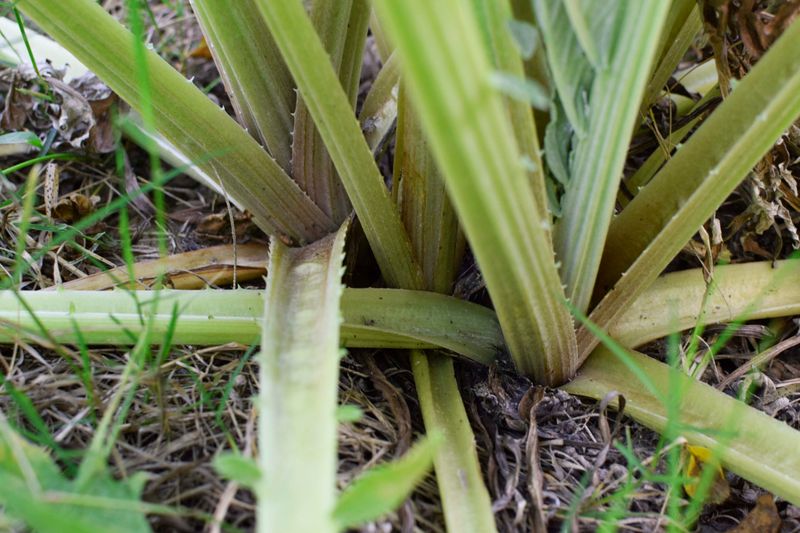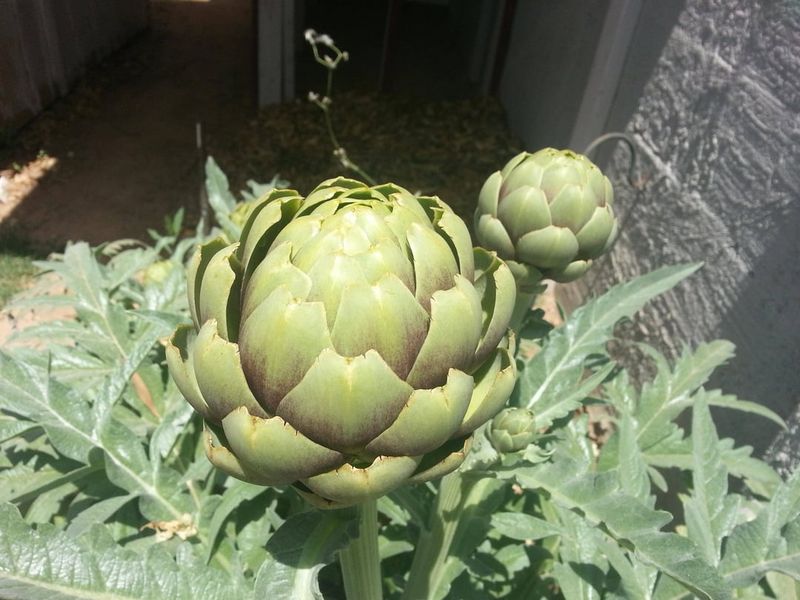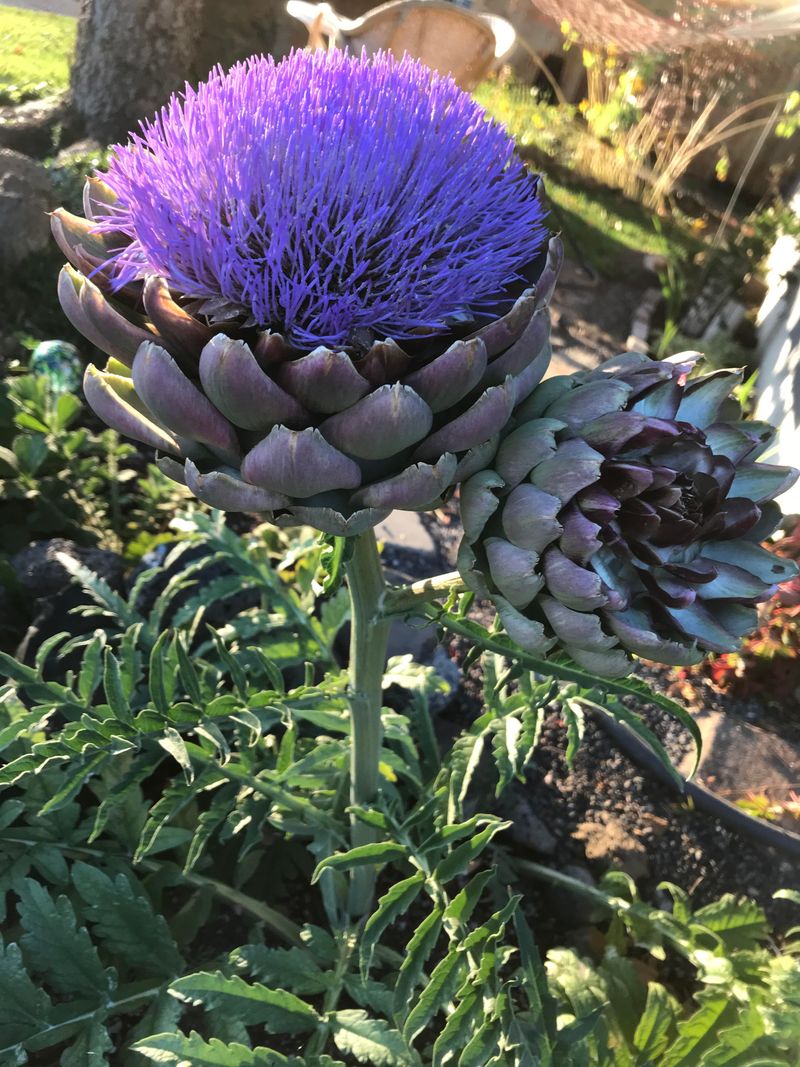Growing artichokes is a satisfying journey, but it’s not always a breeze. These bold, architectural plants need a bit of finesse to yield those prized flower buds—and skipping a few key steps can mean missing out on a great harvest. A common slip-up is not giving them enough space or sunlight.
Artichokes thrive in full sun and need room to stretch, with wide foliage and deep roots. Crowding them in a small patch or shady spot usually leads to stunted growth and fewer buds. While they appreciate steady moisture, soggy soil is a recipe for trouble.
Stick to well-drained beds, water deeply but infrequently, and mulch to retain hydration without drowning the roots. With a bit of patience and smart setup, artichokes will reward you with stunning plants and tasty, homegrown flavor
1. Planting In Poor Drainage
Soggy roots spell disaster for artichoke plants. While they need consistent moisture, standing water quickly leads to root rot and plant failure.
I learned this lesson the hard way after losing my first crop to waterlogged soil. The plants simply yellowed and collapsed before producing any buds.
Prepare raised beds or mound soil if your garden has clay or compacted earth. Adding organic matter like compost improves drainage while still retaining necessary moisture for healthy growth.
2. Ignoring Soil PH Requirements
Many gardeners overlook the importance of soil pH when growing artichokes. These Mediterranean natives prefer slightly alkaline conditions between 6.5 and 7.5 for optimal nutrient uptake.
Testing your soil before planting saves countless headaches later. My garden naturally runs acidic, around 5.8, which explained why my plants struggled until I amended with garden lime.
Incorrect pH levels lock up nutrients even if they’re present in the soil, leading to stunted growth and poor bud development despite regular fertilizing.
3. Crowding Plants Together
Artichokes need serious space to thrive—much more than most gardeners initially allocate. Each plant can spread 4-6 feet wide with dramatic, silvery foliage.
Cramped quarters lead to poor air circulation, increasing disease problems like powdery mildew. The competition for nutrients also results in smaller, fewer buds per plant.
Space plants at least 4 feet apart in rows 6 feet apart. This seems excessive when planting small seedlings, but they’ll quickly grow to fill this space with their architectural presence.
4. Skimping On Mulch
Bare soil around artichoke plants invites trouble. Without proper mulching, soil temperatures fluctuate wildly, stressing these temperature-sensitive perennials and reducing yield.
A thick layer of organic mulch moderates soil temperature, suppresses weeds, and conserves crucial moisture. Straw, leaf mold, or compost work wonderfully for this purpose.
Apply 3-4 inches of mulch around plants, keeping it pulled back slightly from stems to prevent rot. Refresh this protective layer seasonally as it breaks down and enriches your soil.
5. Harvesting Too Late
Waiting too long to harvest artichokes ruins their eating quality. Once the buds begin to open, they quickly become tough and inedible as they prepare to flower.
Harvest when buds are firm and tight, before the scales begin separating at the top. The bottom scales should still squeeze together when pressed gently.
Keep a close eye on developing buds, especially during warm weather when they can mature rapidly. I check my plants every other day during peak season to catch buds at their perfect harvesting stage.
6. Neglecting Winter Protection
Frost damage kills unprotected artichoke plants in colder regions. Many gardeners lose their perennial plants after the first winter because they overlook this crucial step.
In zones 7 and colder, cut plants back to about 8-10 inches tall after harvest season. Cover the crown with a thick layer of straw, leaves, or other insulating material.
Some northern gardeners dig and store roots in damp sand or peat in a cool basement. This extra effort pays off with established plants that produce earlier and more abundantly in subsequent seasons.
7. Forgetting To Fertilize
Artichokes are heavy feeders that quickly deplete soil nutrients. Underfed plants produce tiny, unimpressive buds that barely justify the garden space they occupy.
Feed plants with balanced organic fertilizer when planting and again when plants are actively growing. Compost tea or fish emulsion provides a welcome nutrient boost during bud formation.
Yellowing lower leaves often signal nitrogen deficiency, while purple-tinged foliage suggests phosphorus shortage. Adjust your feeding program based on these visual cues for healthier, more productive plants.
8. Improper Watering Techniques
Inconsistent watering creates stressed artichoke plants that produce tough, bitter buds. These deep-rooted plants need steady moisture, especially during bud development.
Drip irrigation works better than overhead sprinklers, which can promote fungal diseases by wetting foliage. Aim for deep, thorough watering rather than frequent shallow sprinkling.
Apply approximately 1-2 inches of water weekly, adjusting for rainfall and temperature. Morning watering gives leaves time to dry before evening, reducing disease problems that plague many artichoke gardens.
9. Misunderstanding Vernalization Needs
First-year artichokes often disappoint gardeners who don’t understand their chilling requirements. These biennial plants typically need exposure to cold temperatures (below 50°F) for 1-2 weeks to trigger bud formation.
Without this vernalization period, plants may grow beautiful foliage but produce no edible buds. In warmer climates, this explains why some gardeners see only green growth.
Start seeds early indoors in cool regions, or choose annual varieties bred to produce without chilling in warm climates. Some gardeners refrigerate young seedlings for two weeks before transplanting to satisfy this requirement artificially.
10. Planting At The Wrong Time
Timing matters tremendously with artichokes. Planting too late in spring subjects young plants to summer heat before they’re established, often causing bolting or stress-induced dormancy.
Cool-climate gardeners should start seeds indoors 8-10 weeks before last frost for transplanting when danger of hard freeze passes. Southern gardeners often plant in fall for spring harvest before summer heat arrives.
My most successful crops came from transplants set out just as the soil warmed but well before hot weather. This timing allowed roots to establish during mild conditions, setting the stage for vigorous growth.
11. Overlooking Pest Problems
Aphids and artichoke plume moths can devastate your crop while you’re not looking. These pests hide under leaves or burrow into buds, causing damage before most gardeners notice their presence.
Regular inspection prevents small problems from becoming disasters. Turn over leaves weekly to check for aphid colonies, and look for tiny holes in buds that signal plume moth activity.
Beneficial insects like ladybugs and lacewings provide natural control. For serious infestations, insecticidal soap works against aphids, while Bacillus thuringiensis (Bt) helps manage caterpillars without harming beneficial garden helpers.
12. Using Chemical Pesticides Unnecessarily
Reaching for broad-spectrum pesticides at the first sign of trouble disrupts the garden ecosystem. These chemicals kill beneficial insects that naturally control artichoke pests, creating a cycle of dependency on more chemicals.
Most artichoke problems respond well to less harmful interventions. Strong water sprays dislodge aphids, while hand-picking larger pests like snails keeps populations manageable.
Establishing diverse plantings around artichokes attracts natural predators. Flowering herbs like dill and fennel support parasitic wasps that control caterpillars better than any spray could, while requiring far less effort.
13. Failing To Remove Suckers
Established artichoke plants produce numerous side shoots (suckers) that sap energy from the main plant. Left unchecked, these offshoots create overcrowded conditions and reduce the size and quality of your harvest.
Select the strongest 3-4 shoots to keep each spring, removing the rest by cutting them at soil level. This focused growth strategy channels the plant’s energy into fewer, larger buds.
The removed suckers aren’t waste—they make perfect propagation material. Pot them up to expand your artichoke patch or share with gardening friends who admire your bountiful harvest.
14. Growing In Too Much Shade
Insufficient sunlight leads to lanky, unproductive artichoke plants. These Mediterranean natives evolved under bright conditions and require at least 6-8 hours of direct sun daily to form proper buds.
Partial shade locations might support foliage growth but rarely produce satisfying harvests. Plants stretch toward available light, becoming top-heavy and prone to toppling in summer storms.
Select your sunniest garden spot for these architectural vegetables. If your garden has limited full-sun areas, prioritize artichokes over more shade-tolerant crops to maximize your chance of success with these light-loving plants.
15. Discarding Secondary Buds
Focusing solely on the main artichoke bud misses out on a significant portion of potential harvest. After cutting the central bud, many gardeners neglect the smaller side buds that develop later.
These secondary buds may be smaller but often taste sweeter and more tender than the primary harvest. With proper care, a single plant can produce 5-7 primary buds and dozens of secondary ones throughout the season.
Harvest these side buds when they reach golf ball to tennis ball size. Their compact form makes them perfect for quick roasting or grilling whole—a delicacy that many artichoke connoisseurs consider superior to the main crop.

